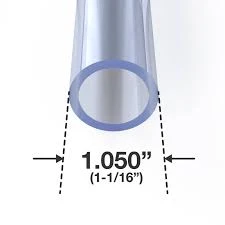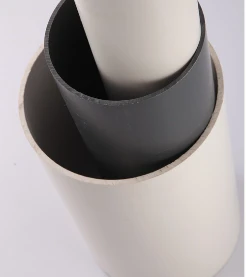Jul . 06, 2025 06:58 Back to list
HDPE Drainage Pipe Supplier – Durable & Corrosion-Resistant Solutions
- Introduction to hdpe drainge pipe
and market overview - Material advantages: HDPE vs. PVC drainage pipe
- Technical strengths and properties of HDPE drainage pipes
- Manufacturers comparison table: Performance, Pricing & Support
- Jointing methods and customization solutions in hdpe pipe jointing
- Real-world application case studies and industry adoption
- Conclusion: Why choose hdpe drainge pipe for modern infrastructure

(hdpe drainge pipe)
Introduction to hdpe drainge pipe: Evolution and Market Trends
The global demand for reliable drainage solutions has grown exponentially over the past decade, with hdpe drainge pipe emerging as one of the most preferred choices for civil, agricultural, and industrial applications. According to the Global Plastic Pipes Market Report 2023, the worldwide plastic pipe market reached a value of USD 61.1 billion, with high-density polyethylene (HDPE) pipes representing 38% of this segment. The market trends indicate a significant transition from traditional concrete and metal piping systems towards advanced plastic materials—driven by longevity, corrosion resistance, and adaptability to harsh geotechnical conditions. The evolving standards for water management, green infrastructure, and sustainable drainage solutions are accelerating the adoption of hdpe drainge pipe, offering improved lifecycle performance and substantial cost savings over a 50-year design period.
Comparing Material Advantages: HDPE vs. PVC Drainage Pipe
When evaluating pipeline systems, project managers often weigh the core benefits of hdpe drainge pipe against those of pvc drainge pipe. HDPE pipes are prized for their chemical resistance, flexibility, and exceptional impact tolerance even at sub-zero temperatures. Their elongation-to-break ratio (typically exceeding 600%) means they withstand soil movements and seismic events far better than PVC pipes, which generally exhibit a rigid modulus and lower impact resilience. In contrast, PVC drainage pipes offer ease of installation for small-diameter, non-pressure applications and maintain high flow efficiency due to their smooth interior surface. HDPE, however, excels in high-pressure and dynamic-load scenarios, offering exceptional resistance to root intrusion and abrasion. The decision matrix between these materials hinges on project scale, burial depth, hydraulic demand, and anticipated environmental stresses.
Technical Strengths and Properties of HDPE Drainage Pipes
HDPE drainage pipes are manufactured using high-grade polymers that deliver extraordinary durability. Notably, these pipes exhibit an excellent balance of tensile strength (23-26 MPa) and impact resistance, making them suitable for deep-burial, high-traffic, or fluctuating load environments. Their superior chemical inertness protects against common groundwater and soil contaminants, increasing service life in agricultural or industrial sectors. Furthermore, their fusion-welded joints eliminate risk of leakage—a common failure point in conventional pipe materials. Longevity is a distinct advantage; HDPE pipes tested under ISO 9080 conditions show extrapolated lifespans exceeding 100 years under normal operating pressure. The material's smooth bore consistently maintains a Hazen-Williams coefficient of C=150, ensuring minimal friction loss and maximizing hydraulic capacity. Such performance also results in lower operational energy costs for pump-driven systems.
Manufacturers Comparison Table: Performance, Pricing & Support
Selecting a reliable manufacturer is essential when specifying hdpe drainge pipe or its jointing systems. The table below details some leading brands, comparing technical credentials, pricing index, after-sales support, and quality certifications. This data allows decision-makers to assess not only raw material properties but also the comprehensive value offered over the product lifecycle.
| Manufacturer | HDPE Pipe Warranty | Jointing Technology | Certifications | Price Index (USD/m) | After-Sales Services |
|---|---|---|---|---|---|
| JM Eagle | 50 years | Butt Fusion, Electrofusion | NSF, ASTM, ISO 9001 | 1.18 | 24/7 hotline, Onsite training |
| WL Plastics | 50 years | Butt Fusion, Mechanical Coupling | ASTM, FM Approvals | 1.12 | Project-specific support |
| Pipelife | 60 years (Europe) | Electrofusion, Flanged Joint | EN 12201, ISO 4427 | 1.23 | Online monitoring tools, Logistics management |
| Polypipe | 60 years (UK) | Push-fit, Butt Fusion | BS EN ISO 14001, WRc | 1.19 | Onsite commissioning, Technical helpline |
Price indices are comparative, based on standard DN200 SDR17 pipe at 2023 market rates.
Jointing Techniques and Customization in HDPE Pipe Jointing
The integrity of any drainage system hinges on joint reliability. Modern hdpe pipe jointing methods such as butt fusion, electrofusion, mechanical coupling, and socket fusion enable near-monolithic line construction. Butt fusion is the most prevalent method for larger diameter mains, creating a joint as strong as the pipe itself, impervious to leaks. Electrofusion allows for safe connections in restricted-access installations or for repairs. Customization options range from pre-fabricated bends and manholes to integrated inspection chambers, tailored for complex site geometries and rapid deployment. Advanced GPS-enabled welding documentation ensures compliance and long-term traceability. For unique applications—such as micro-tunneling, water management in contaminated land, or highly corrosive environments—manufacturers offer specialized resins and bespoke dimensions to meet engineering specifications.
Application Case Studies: Industry-Wise Adoption and Results
The versatility of HDPE pipes is highlighted by diverse case studies across sectors. In municipal stormwater schemes, cities like Melbourne replaced 18,000 meters of aging storm mains with HDPE, reporting a 36% reduction in maintenance callouts and a 47% faster installation time compared to concrete alternatives. In agricultural drip irrigation projects in California, HDPE’s flexibility reduced line breakage by over 82% during seasonal ground shifts, extending replacement cycles significantly. Industrial parks facing corrosive wastewater have leveraged HDPE’s inertness, enhancing uptime and lowering chemical treatment expenses. Data-driven post-installation assessments show leakage rates dropping below 0.07% over a five-year horizon, far surpassing legacy materials. Mining operators embrace HDPE for tailings and dewatering lines, capitalizing on its impact and abrasion resistance—Australian iron ore operations noted average service lives exceeding 50 years for high-load installations.
Conclusion: The Future of hdpe drainge pipe in Modern Infrastructure
The emergence of hdpe drainge pipe signifies a shift towards more sustainable, resilient, and cost-effective infrastructure. Industry trends, supported by robust performance data and adaptability, position HDPE as the benchmark for future drainage projects. Whether compared with pvc drainge pipe or evaluated on the merits of hdpe pipe jointing innovations, HDPE stands out for its environmental benefits, high return on investment, and unmatched service life. As regulatory demands rise and the need for reliable water management intensifies, stakeholders across public and private domains are poised to benefit from the technical and economic superiority of HDPE drainage solutions.

(hdpe drainge pipe)
FAQS on hdpe drainge pipe
Q: What is an HDPE drainage pipe?
A: An HDPE drainage pipe is a high-density polyethylene pipe used for efficient water drainage systems. It is known for its flexibility, durability, and resistance to corrosion. HDPE pipes are commonly used in residential, commercial, and industrial drainage applications.
Q: How does HDPE drainage pipe compare to PVC drainage pipe?
A: HDPE drainage pipes are more flexible and resistant to impact compared to PVC pipes. While PVC drainage pipe is more rigid, HDPE offers superior performance in harsh or shifting soil conditions. Both types are widely used, but HDPE is preferred for underground installations.
Q: What are the common methods for HDPE pipe jointing?
A: Common HDPE pipe jointing methods include butt fusion, electrofusion, and mechanical fittings. These methods ensure leak-proof and strong joints for effective drainage systems. Proper jointing technique enhances the longevity and reliability of the pipe network.
Q: Can HDPE drainage pipes be used for chemical waste or aggressive liquids?
A: Yes, HDPE drainage pipe is highly resistant to chemicals and aggressive liquids. This makes it suitable for industrial drainage and chemical waste transportation. Always consult the manufacturer to confirm chemical compatibility for specific applications.
Q: Is it easy to repair or replace sections of an HDPE drainage pipe?
A: Yes, HDPE drainage pipes are relatively easy to repair or replace thanks to their jointing flexibility and lightweight properties. Damaged sections can be cut out and new joints made using standard jointing techniques. This minimizes downtime and disruption during maintenance.
-
HDPE Natural Sheet: Durable, Food-Grade & Versatile Plastic Solutions
NewsAug.27,2025
-
Durable Glossy PVC Rigid Sheet | Premium High-Shine Panels
NewsAug.26,2025
-
Durable PP Rigid Sheet: Lightweight, Chemical Resistant Solutions
NewsAug.21,2025
-
PVC Grey Sheet for Extraction: Chemical Resistant & Durable
NewsAug.19,2025
-
Durable PVC Pipe Fittings for Plumbing & Irrigation Needs
NewsAug.18,2025
-
HDPE Steel Belt Reinforced Spiral Corrugated Pipe | High Strength
NewsAug.17,2025

